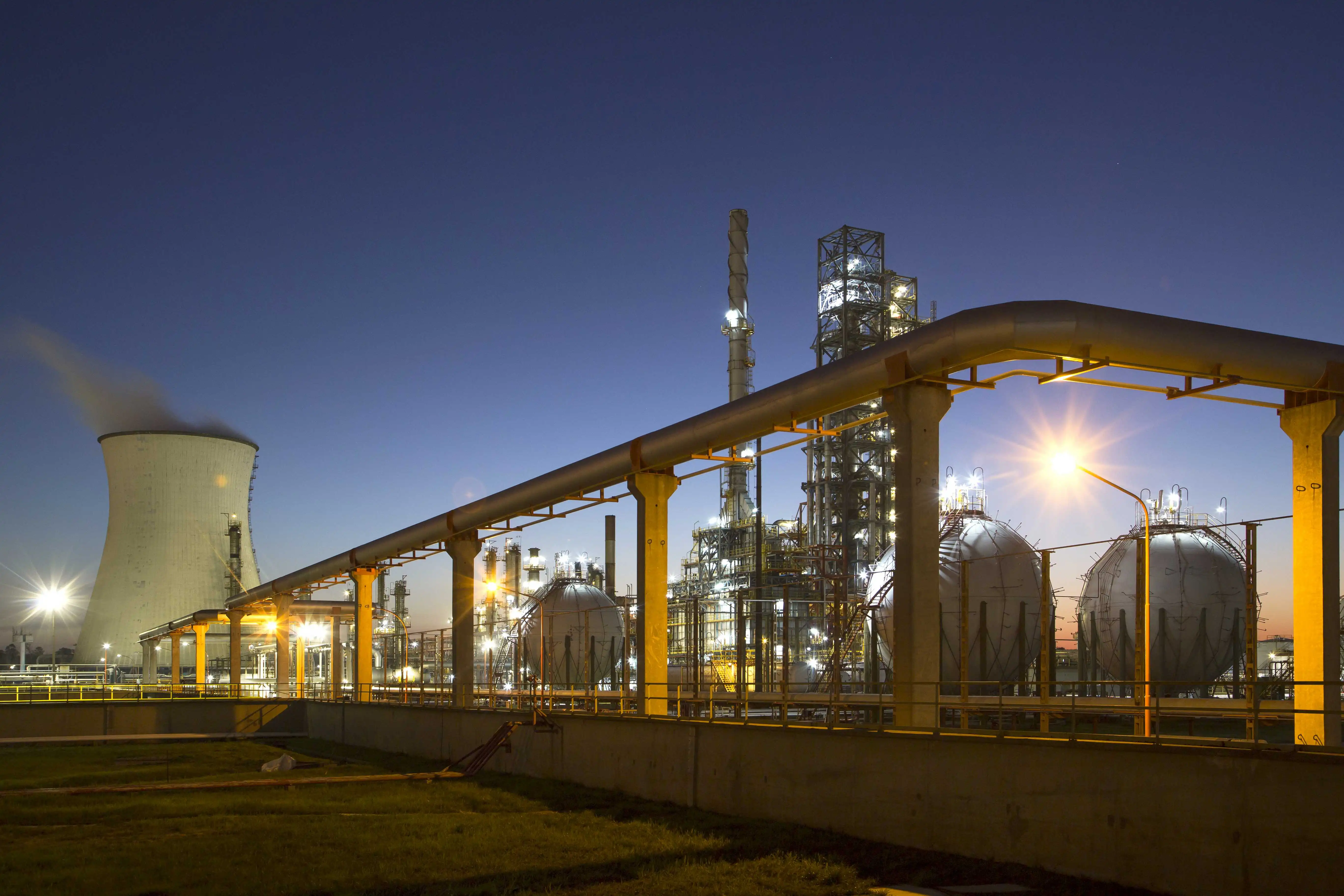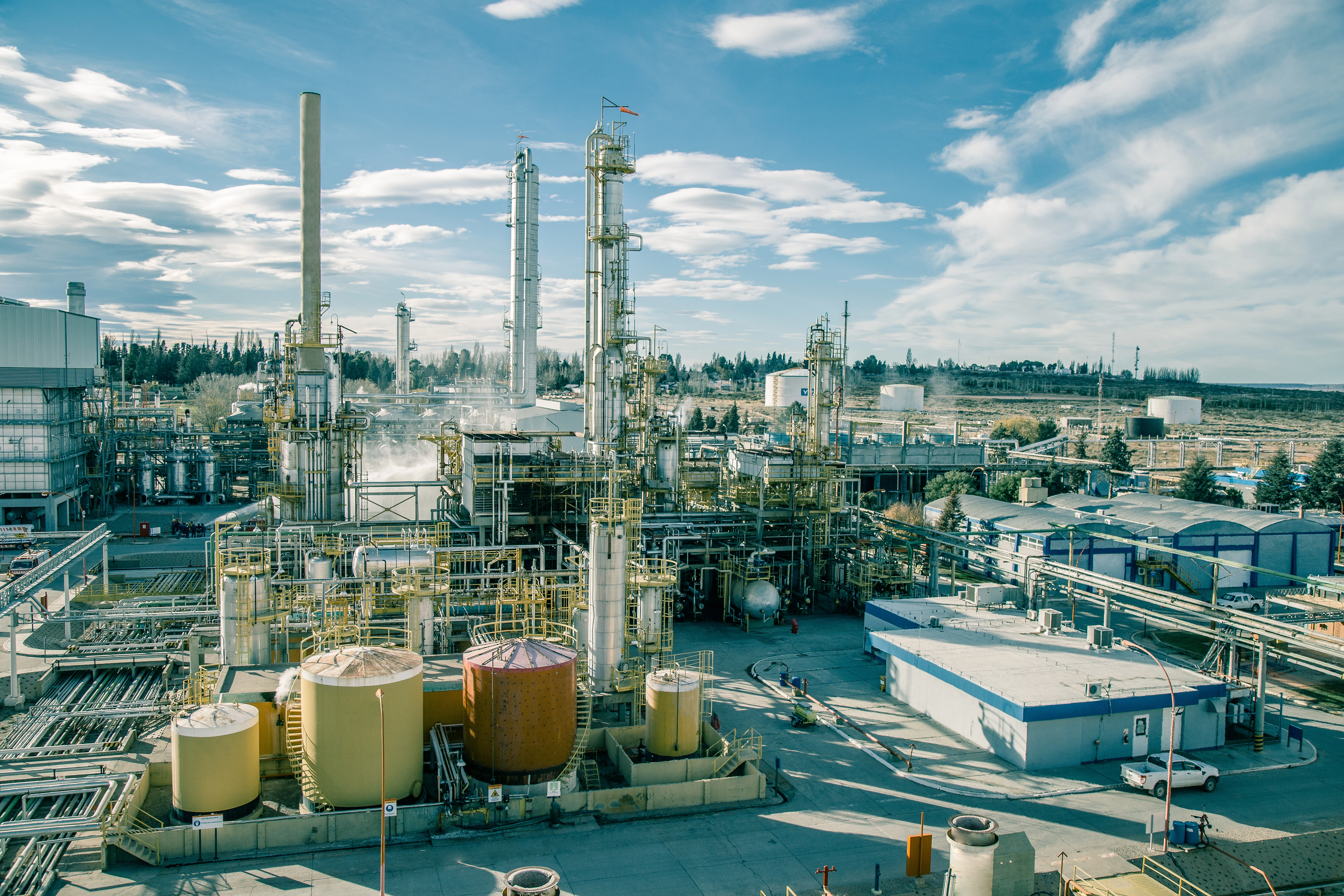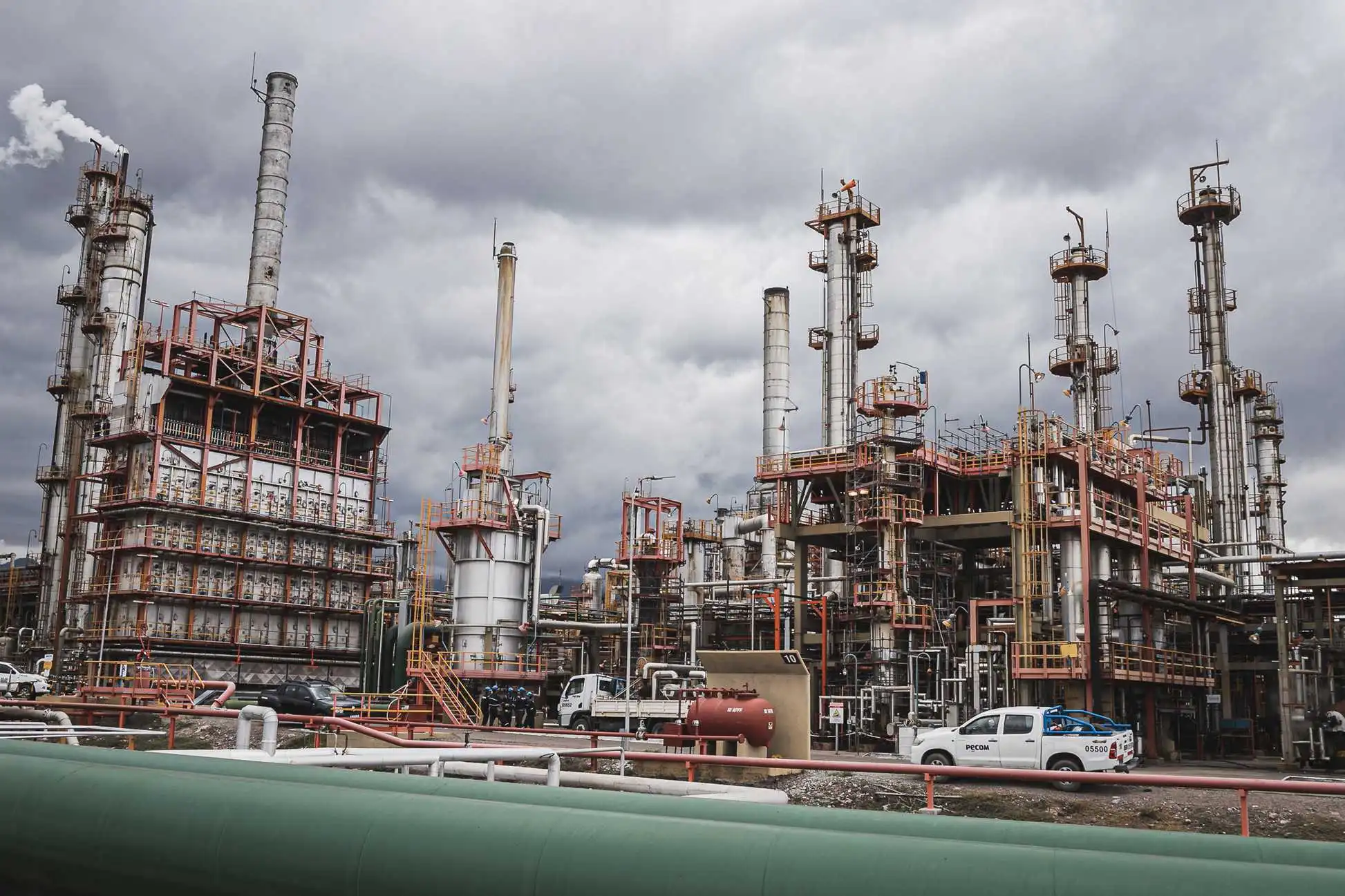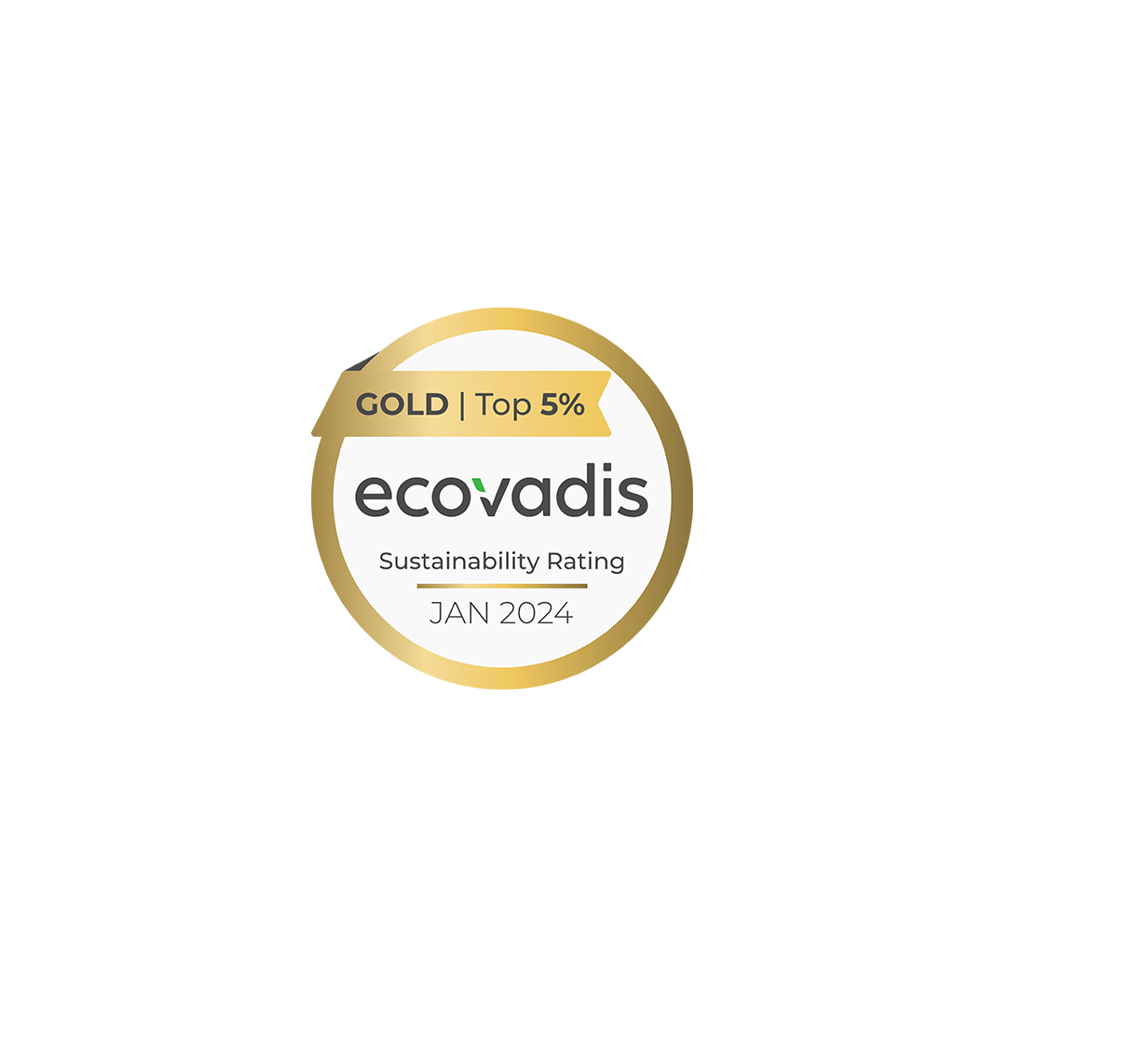INTELLIGENCE TO TRANSFORM YOUR WORLD
CHEMISTRY IS EVERYWHERE,
SO ARE WE
We are a leading company in the production of chemicals in Argentina.
We produce, market and distribute petrochemical products made in the different YPF QUÍMICA facilities located throughout the country. These products are destined for the chemical, industrial and agricultural markets of Argentina, Latin America and the rest of the world and constitute the raw material of a great variety of objects present in everyday life.
CHEMICAL PRODUCTION LEADER IN ARGENTINA
We offer a wide variety of raw materials, with a superior quality that only YPF can provide. We know the industry, we know the country, and that is why we know how to facilitate what each industry activity needs.
TOP #1 CHEMICAL PRODUCTION IN ARGENTINA
We offer a wide variety of raw materials, with a superior quality that only YPF can provide. We know the industry, we know the country, and that is why we know how to facilitate what each industry activity needs.
Productive Capacity + 2.2 M Tons / year
We have three strategically located industrial facilities integrated by an efficient logistic network: Ensenada, Luján de Cuyo and Plaza Huincul. In addition to the Bahía Blanca industrial plant, Profertil with a 50% stake.
Productive Capacity + 2.2 M Tons / year
We have three strategically located industrial facilities integrated by an efficient logistic network: Ensenada, Luján de Cuyo and Plaza Huincul. In addition to the Bahía Blanca industrial plant, Profertil with a 50% stake.
+200 ACTIVE CUSTOMERS
We focus on our customers' needs by offering assistance and service. We offer quality products meeting the standards within the specifications and on time.
+200 ACTIVE CUSTOMERS
We focus on our customers' needs by offering assistance and service. We offer quality products meeting the standards within the specifications and on time.
Present in +20 countries
We provide solutions in any country in the world directly or through associated distributors. We strengthen our regional leadership, from commercial offices in Argentina, Brazil and Chile.
Present in +20 countries
We provide solutions in any country in the world directly or through associated distributors. We strengthen our regional leadership, from commercial offices in Argentina, Brazil and Chile.
PRODUCTS
HEAVY AROMATIC 220
HEAVY INDUSTRIAL AROMATIC
BENZENE
CYCLOHEXANE
ORTHOXILENE
TOLUENE
XYLENE MIXTURE
WHITE SPIRIT
NORMAL PENTANE 80/20
NORMAL PARAFFINS CLAB
SOLVENT B
SOLVENT C
PROPANE PROPYLENE
METHANOL
MELTED MALEIC ANHYDRIDE
SOLID MALEIC ANHYDRIDE
LAB
LAS
LAS REGIONAL
POLYBUT 0
POLYBUT 0E
POLYBUT 10
POLYBUT 30
POLYBUT 5E
POLISOL
PEX AE
PEX AP
HYDRATES INHIBITOR
YFLUX-1 PARAFFINS INHIBITOR
AROMATIC AND CYCLIC SOLVENTS


HEAVY AROMATIC 220
HEAVY INDUSTRIAL AROMATIC
BENZENE
CYCLOHEXANE
ORTHOXYLENE
TOLUENE
XYLENE MIXTURE
For additional information,
select a product
HEAVY AROMATIC 220
This aromatic solvent is a mixture of mono‐, di‐ and tri‐alkylated aromatic compounds with aliphatic compounds. It is a highly soluble clear liquid free from sediments. It is used in making solvents, agrochemicals and baked enamels (cars, refrigerators, washing machines).
HEAVY INDUSTRIAL AROMATIC
This aromatic solvent is a mixture of mono‐, di‐ and tri‐alkylated aromatic compounds with aliphatic compounds. It is a highly soluble clear liquid free from sediments. It is used in making solvents, agrochemicals and baked enamels (cars, refrigerators, washing machines).
BENZENE
Benzene comprises six carbon atoms and six hydrogen atoms in a ring shape structure. It is a clear, colourless, and volatile liquid, with a characteristic aromatic hydrocarbon odour. Industrially is obtained from “reformate”, having numerous applications. Benzene is used in basic chemistry, generally as raw material for the elaboration of different products: phenol, cyclohexane, styrene, synthetic laundry soap, maleic anhydride, etc. It is also used in adhesives, synthetic rubber, etc. It is recommended to prohibit absolutely the use of benzene for the cleaning of pieces, equipment, clothes, any type of fabric, hands, etc., by its high risk for the health and the environment.
CYCLOHEXANE
This naphthenic or cycloparaffinic product is obtained by the catalytic hydrogenation of benzene. It is a crystalline, high‐purity product whose solubility is similar to that of paraffinic products. Its chemical structure is in a ring shape with six saturated carbon atoms. Its main use is in the synthesis of caprolactam, adipic acid and hexamethylenediamine to produce different types of nylon and polyamides. Cyclohexane is also used as solvent in cellulose esters, resins, paints, oil extraction, etc.
ORTHOXYLENE
Orthoxylene is obtained by a catalytic process from a light hydrocarbon stream and removed by distillation from their isomers. Its molecular structure consists of a benzene ring with two methyl groups attached next to each other. Is used in the synthesis of phtalic anhydrides, dyes, medicines, PVC plasticizers. It is also used to make polyester and alkyd resins, insecticides, automotive fuels, etc.
TOLUENE
Toluene is a colourless liquid with a characteristic aromatic odour (smoother than the benzene). It is generally produced along with benzene, xylenes, and C9 aromatics, from the “catalytic reforming” of naphtha (and finally separated by distillation). It has the highest solvent power among hydrocarbon solvents. It is used as a solvent for resins, oils, rubber, lacquer, paints and adhesives. It is also used for the production of benzene (through a process of hydrodealkylation, HDA) and phenol. But its main chemical application is the production of TDI (toluene diisocyanate), which is the raw material to manufacture polyurethanes.
XYLENE MIXTURE
Also named Xilol, it is a mixture of xylene isomers (meta‐, para‐, and ortho‐) and ethylbenzene. They are aromatic hydrocarbons with eight carbon atoms, mainly metaxylene, ethylbenzene, and paraxylene, because the orthoxylene has been partially removed. It is used in high‐octane gasoline and thinners. It is also used to manufacture protective coatings, agrochemicals, etc. It is a very good solvent for alkyd resins, lacquer, enamels, rubber cements, etc.
ALIPHATIC SOLVENTS


WHITE SPIRIT
NORMAL PENTANE 80/20
NORMAL PARAFFINS CLAB
SOLVENT B
SOLVENT C
FOR ADDITIONAL INFORMATION,
SELECT A PRODUCT
WHITE SPIRIT
White spirit is a mixture of paraffinic, cycle paraffinic, and aromatic hydrocarbons with boiling ranges between 145 and 218 °C. It is a colorless, chemically stable, non‐corrosive liquid, and with a soft, sweet odor. Also, it does not leave any stains after evaporation. It is mainly used in thinners for paints, so its characteristics are: • High solvent power. • Quick evaporation at the beginning, which prevents paint from running. • It reduces paints´ viscosity and allows the application of thin and uniform films. • Slow evaporation at the end (so paint does not dry in the applicator). Metallurgical industries use white spirit to clean grease off. It is also used as solvent in wax, polish, and dry cleaning industries.
NORMAL PENTANE 80/20
Normal pentane 80/20 is a colourless liquid, extremely flammable at ambient temperature, with a high vapour tension. It is an aliphatic solvent of normal paraffins with five saturated carbono atoms, obtained by molecular extraction. It is used in solvent extraction processes; pesticides; polymerization (expanded polystyrene), desorption from molecular sieves, etc.
NORMAL PARAFFINS CLAB
Product purely paraffinic (C10‐C14), liquid at ambient temperature, appreciated because of its high inflammation point and low content of sulphur and aromatic hydrocarbons. Mainly used as raw material in the petrochemical industry, besides being used as a solvent itself.
SOLVENT B
Basically, the solvent B is a hydrocarbon mixture mainly constituted by normal and iso paraffins. Solvent B has a distillation range that meets the demands of the rubber industry for the manufacture of balloons, balls, dummies, teats, gloves, draft excluders, etc. In this kind of industry it is used to wet surfaces to be stuck together and for making contact adhesives. In hot sticking inner tubes patches, where drying is a function of temperature, this solvent is excellent because of its controlled evaporation. As it has a wide distillation range, solvent B is used in garages and industries to clean and remove grease; or at home when quick drying of surfaces to be cleaned is required.
SOLVENT C
Basically, the solvent C is a hydrocarbon mixture mainly constituted by normal and iso paraffins of C6. It is used mainly for extracting vegetable oils (edible or not), such as peanut, sunflower, olive, corn, soya, grape, cotton, prickly pear, castor oil, avocado pear, etc. The solvent removes the oil directly from crushed seed or from cakes made by pressing seeds. As the extracted oil is used for human consumption, and the cakes are used to make flour or in balanced food, the solvent must meet strict quality standards, apart from the common requirements set for the other solvents: • Narrow distillation range, to not to contaminate with solvent neither the oil nor the cake. • Virtually null distillation residues, to assure absence of strange components in the solvent. • Low content of aromatic compounds. • Very low content of sulphur, to avoid oil reactions. This solvent is also used in removing essential oils and in the formulations of quick dry lacquers and thinners. Solvent C meets the requirements of Resolution N° 2012/84 of the Argentine Food Code.
OLEFINS


PROPANE PROPYLENE
FOR ADDITIONAL INFORMATION, SELECT A PRODUCT
PROPANE PROPYLENE
It is a mixture of light hydrocarbons consisting mainly of propylene and propane, in varying proportions. Under normal conditions it is a gas, and it will become a liquid if it is compressed. It is produced in Catalytic Cracking Units of Refineries. Applications as fuel, raw material for the synthesis of olefins.
ALCOHOLS


METHANOL
Also known as methyl alcohol (CH3OH), methanol is obtained by reforming of natural gas as a combination of carbon oxides and hydrogen. After synthesized under pressure in a catalytic process, crude methanol is purified by distillation to chemical grade. Methyl alcohol or methanol is used to produce formaldehyde (chemical intermediate for the production of urea‐formaldehyde and phenol‐ formaldehyde resins); to manufacture antifreezes, MTBE (methyl tert‐butyl ether) an important component of fuels for internal combustion engines; to denature ethyl alcohol, and as solvent for common uses.
SPECIALTIES


MELTED-MALEIC-ANHYDRIDE
SOLID MALEIC ANHYDRIDE
LAB
LAS
LAS REGIONAL
POLYBUT 0
POLYBUT 0E
POLYBUT 10
POLYBUT 30
POLYBUT 5E
Polisol
Pex AE
Pex AP
tap product
for more information
MELTED-MALEIC-ANHYDRIDE
Maleic anhydride is a pure product, solid to room temperature, obtained from a mixture of air and an overheated n‐butane stream in a tubular reactor containing a metallic oxide catalyst, which produces the oxidation of n‐ butane to maleic anhydride, that is then purified by distillation. It must be handled properly during the download, so as not to alter it. Storage time (suggested): 6 months. Applications: Chemical, textile, food and cosmetic industries use maleic anhydride. It is widely used in fibreglass‐reinforced plastics (to build boat hulls, swimming pools, marine accessories, cabins); maleic resins (for lacquers, paints, printing inks) ; modified alkyd resins, and others such as fumaric, polyamide and colophony resins. It is also utilised in lubricant oil additives, plasticizers, agricultural products, surfactants, copolymers, etc.
SOLID MALEIC ANHYDRIDE
Maleic anhydride is a pure product, solid to room temperature, obtained from a mixture of air and an overheated n‐butane stream in a tubular reactor containing a metallic oxide catalyst, which produces the oxidation of n‐ butane to maleic anhydride, that is then purified by distillation. It must be handled properly during the download, so as not to alter it. Storage time (suggested): 6 months Applications: Chemical, textile, food and cosmetic industries use maleic anhydride. It is widely used in fibreglass‐reinforced plastics (to build boat hulls, swimming pools, marine accessories, cabins); maleic resins (for lacquers, paints, printing inks) ; modified alkyd resins, and others such as fumaric, polyamide and colophony resins. It is also utilised in lubricant oil additives, plasticizers, agricultural products, surfactants, copolymers, etc.
LAB
LAB (linear alkyl benzene) is a clear liquid with a characteristic odour, mainly comprised of a mixture of linear mono alkyl benzenes. The light LAB product (Mol. Wt. 242) has less phenylC14% and more phenylC10% than the heavy LAB product (Mol. Wt. 246), where happens the opposite. LAB is the primary surfactant intermediate used in household laundry detergents and industrial cleaning products.
LAS
This product is obtained when a thin film of LAB (Linear Alkyl Benzene) is sulphonated with sulphur trioxide gas. In this process the reactants contact stechiometrically, so there are not secondary compounds in the end product. Because of its biodegradability, LAS is used in formulations of solid and liquid detergents, concentrated liquids and powders for industrial and laundry uses, etc.
LAS REGIONAL
This product is obtained when a thin film of LAB (Linear Alkyl Benzene) is sulphonated with sulphur trioxide gas. In this process the reactants contact stechiometrically, so there are not secondary compounds in the end product. Because of its biodegradability, LAS is used in formulations of solid and liquid detergents, concentrated liquids and powders for industrial and laundry uses, etc.
POLYBUT 0
Polybutenes are obtained by selective polymerisation of the isobutylene contained in a butene‐butane stream with an acidic catalyst (aluminium chloride). These polymers are 95‐100% monoolefins and they have important properties such as permanent plasticity; high viscous index; stability to light, heat and most chemicals; high hydrophobicity and non‐permeability to gases and vapour; low evaporation loss at ordinary temperatures and complete volatilisation under high temperatures, leaving no residues; good electrical properties. They are characterised by their stickiness, which is enhanced on increasing their molecular weight. The different polybut grades go (in viscosity range) from light oils to highly viscous liquids. Remember to handle it properly during your download, so as not to alter it. They are used in a variety of applications such as ink formulations, fertilizers carrier, cable oils, adhesives and sealants.
POLYBUT 0E
Polybutenes are obtained by selective polymerisation of the isobutylene contained in a butene‐butane stream with an acidic catalyst (aluminium chloride). These polymers are 95‐100% monoolefins and they have important properties such as permanent plasticity; high viscous index; stability to light, heat and most chemicals; high hydrophobicity and non‐permeability to gases and vapour; low evaporation loss at ordinary temperatures and complete volatilisation under high temperatures, leaving no residues; good electrical properties. They are characterised by their stickiness, which is enhanced on increasing their molecular weight. The different polybut grades go (in viscosity range) from light oils to highly viscous liquids. Remember to handle it properly during your download, so as not to alter it. They are used in a variety of applications such as ink formulations, fertilizers carrier, cable oils, adhesives and sealants.
POLYBUT 10
Polybutenes are obtained by selective polymerisation of the isobutylene contained in a butene‐butane stream with an acidic catalyst (aluminium chloride). These polymers are 95‐100% monoolefins and they have important properties such as permanent plasticity; high viscous index; stability to light, heat and most chemicals; high hydrophobicity and non‐permeability to gases and vapour; low evaporation loss at ordinary temperatures and complete volatilisation under high temperatures, leaving no residues; good electrical properties. They are characterised by their stickiness, which is enhanced on increasing their molecular weight. The different polybut grades go (in viscosity range) from light oils to highly viscous liquids. Remember to handle it properly during your download, so as not to alter it. They are mainly used in lubricant oils, compressor lubricants, adhesives, caulking and sealing, cables manufacture, etc.
POLYBUT 30
Polybutenes are obtained by selective polymerisation of the isobutylene contained in a butene‐butane stream with an acidic catalyst (aluminium chloride). These polymers are 95‐100% monoolefins and they have important properties such as permanent plasticity; high viscous index; stability to light, heat and most chemicals; high hydrophobicity and non‐permeability to gases and vapour; low evaporation loss at ordinary temperatures and complete volatilisation under high temperatures, leaving no residues; good electrical properties. They are characterised by their stickiness, which is enhanced on increasing their molecular weight. The different polybut grades go (in viscosity range) from light oils to highly viscous liquids. Remember to handle it properly during your download, so as not to alter it. They are mainly used as lubricant oil additives, adhesives, caulking and sealing, hot melt adhesives, film stretch, etc.
POLYBUT 5E
Polybutenes are obtained by selective polymerisation of the isobutylene contained in a butene‐butane stream with an acidic catalyst (aluminium chloride). These polymers are 95‐100% monoolefins and they have important properties such as permanent plasticity; high viscous index; stability to light, heat and most chemicals; high hydrophobicity and non‐permeability to gases and vapour; low evaporation loss at ordinary temperatures and complete volatilisation under high temperatures, leaving no residues; good electrical properties. They are characterised by their stickiness, which is enhanced on increasing their molecular weight. The different polybut grades go (in viscosity range) from light oils to highly viscous liquids. Remember to handle it properly during your download, so as not to alter it. They are used in a variety of applications such as lubricants in polyethylene compressors, hydraulic oils, shear oils, adhesives and sealants.
POLISOL
Polisol is essentially dimmers and trimmers of butylenes, obtained in the selective polymerization of isobutylene, contained in a butane‐butene stream, with an acidic catalyst (Aluminium Chloride). Polisol has a very low Flash Point, has no reactivity with other solvents and has no chemical changes when it’s used as solvent. Emulsions of Polisol are used in agriculture as pesticide. With stearats and paraffin waxes, Polisol is used as waterproofing. In paints, Polisol’s emulsions give additional water resistance and perform like a plasticizer.In spray gun sealants, which includes Polybut 10, Polisol can be used up to 7% instead White Spirit. In durability sealants, which used Polybut 200, 5‐6% of Polisol can be added.
PEX AE
PEX AE is a clear liquid with a characteristic odour. It is comprised of linear alkyl benzenes, especially those with lateral chains of 12 carbon atoms. Is used in electrical insulating oil formulations for high‐voltage cables.
PEX AP
PEX AP is a mixture of alkyl benzenes obtained in LAB production and it is the heavy fraction in the distillation process. Is used in soluble and non‐soluble oil formulations for metalworking, refrigerating oils, antirust additives, emulsifier for agrochemicals, etc.
OILFIELD CHEMICALS


BIOCIDES
DEMULSIFIERS
COMPLETION FLUIDS
PARAFFIN INHIBITORS
HYDRATES TREATMENT
FOR ADDITIONAL INFORMATION, SELECT A PRODUCT
BIOCIDAS
YQ-P BIO3070
YQ-P BIO4070
The YPF Química integral Biocide treatment and monitoring system is composed of a line of products designed by Y-TEC broad spectrum NON-oxidizing biocides, which are efficient and safe products that can effectively inhibit and destroy numerous microorganisms typical of Shale production. These products have demonstrated in the field a consistent specific selectivity to act on typical microbiology, such as Halanaerobium and Marinobacter. They are a synergistic blend of carefully selected biocides with specific sufractant and wettability properties developed under different formation water conditions in Conventional and Non-Conventional systems in Argentina, together with a follow-up and monitoring system based on metagenomic studies with Nanopore Technologies. All the products of the line demonstrated a high efficiency proven in the field for the control of the MIC-phenomena, thus generating important benefits as a consequence of an improvement in water quality and consequently an improvement in the associated production, increasing the reliability, integrity and greater availability of surface and subsurface facilitie
For additional information about our products, please contact us: oilfieldchemicals@ypf.com
DEMULSIFIERS
YQ-P EBREAK 1003
Nanotechnology
This product developed by Y-TEC consists of a blend of de-emulsifying agents and surfactants with non-ionic and anionic characteristics; along with aromatic solvents with a new generation of nanotechnology-based chemicals.
Its formulation has been developed to treat different crude oils in different operating conditions and can also be used as an intervention fluid.
Among the main advantages we can mention:
• Increase of dehydration efficiency, salt removal.
• Maintainance of a good performance against quality variations in crude oil of medium and high API gravity.
• Increased wettability of solids.
• It has a very high efficiency in the dehydration of crude oils, reducing production losses, maximizing the delivery of crude oil in specification.
COMPLETION FLUIDS
YQ-S SWEEP 2020
Nanotechnology
This product developed by Y-TEC consists of a blend of emulsifying agents and organic components, with excellent surfactant and wettability properties. It has a high efficiency in reducing oil production losses. Given its properties, this product can be implemented in both, remediation processes of Tight gas reservoirs and oil recovery processes in Shale reservoirs.
PARAFFIN INHIBITORS
Parafins are compounds present in oil that by changes in pressure conditions, temperature and/or crude oil composition, can precipitate from the liquid core causing clogging, high loading losses in the lines and deposits in process tanks.
YQ-P FLUX 1
This is a product developed by Y-TEC from specific additives in a hydrocarbon matrix. This product is an effective agent in the control of paraffins, which is used in the production segment with the aim of reducing the oil Pour Point and inhibiting paraffin deposition.
YQ-P FLUX 5020
This is a NEW Paraffin Inhibitor developed from specific additives in a hydrocarbon matrix. It is the result of the improvement process carried out by Y-TEC.
This product presents an extra performance in the control of paraffins, resulting in higher production levels and extension of the pipeline cleaning periods, reducing the oil Pour Point.
HYDRATES TREATMENT
YQ-P THI1003
Alcohol blend designed to control the formation of gas hydrates in gas production and transportation facilities.
Gas hydrates are generated due to the presence of water and condensate in gas lines, at low temperatures and high pressures, causing then to clog.
Said obstructions can cause ruptures in the pipelines and, consequently, production losses. Our product prevents the formation of hydrate plugs and blockages in gas lines, avoiding breakings in the production and transportation lines.
Ensenada,
Buenos Aires province
ENSENADA INDUSTRIAL FACILITY
Main petrochemical facility in Argentina. Integrated into the largest refinery in the country and supplied by it with the main raw materials, virgin naphtha and liquefied petroleum gas. Most of the products marketed by YPF QUÍMICA are produced at this facility.
ANNUAL PRODUCTION CAPACITY
918,000 TONS
Benzene + Toluene + Xylene Mixture + Heavy Aromatic
526 Kt/year
Orthoxylene
25 Kt/year
Propylene
120 Kt/year
Cyclohexane
95 Kt/year
LAB
53 Kt/year
LAS
32 Kt/year
Maleic
17.5 Kt/year
POLYBUT
26 Kt/year
Butene 1
25 Kt/year
Plaza Huincul,
Neuquén province
PLAZA HUINCUL INDUSTRIAL FACILITY
Located next to the Plaza Huincul refinery, in Neuquén, the plant for the production of Methanol out of natural gas operates.
Strategically located to supply natural gas and electricity.
ANNUAL PRODUCTION CAPACITY
411,000 TONS
Methanol
411 Kt/year
Luján de Cuyo,
Mendoza province
LUJAN DE CUYO INDUSTRIAL FACILITY
The Refinery produces and supplies propylene at a rate of 100,000 tons per year.
ANNUAL PRODUCTION CAPACITY
100,000 TONS
Propylene
100 Kt/year
Ensenada,
Buenos Aires province
ENSENADA INDUSTRIAL FACILITY

Located next to the Plaza Huincul refinery, in Neuquén, the plant for the production of Methanol out of natural gas operates. Strategically located to supply natural gas and electricity.
ANNUAL PRODUCTION CAPACITY
950,000 TONS
Benzene + Toluene + Xylene Mixture + Heavy Aromatic
525 Kt/year
Orthoxylene
35 Kt/year
Propylene
140 Kt/year
Cyclohexane
95 Kt/year
LAB
53 Kt/year
LAS
32 Kt/year
Maleic
17.5 Kt/year
POLYBUT
26 Kt/year
Butene 1
25 Kt/year
Plaza Huincul,
Neuquén province
PLAZA HUINCUL INDUSTRIAL FACILITY

Located next to the Plaza Huincul refinery, in Neuquén, the plant for the production of Methanol out of natural gas operates.
Strategically located to supply natural gas and electricity.
ANNUAL PRODUCTION CAPACITY
411,000 TONS
Methanol
411 Kt/year
Luján de Cuyo,
Mendoza province
LUJAN DE CUYO INDUSTRIAL FACILITY

The Refinery produces and supplies propylene at a rate of 100,000 tons per year.
ANNUAL PRODUCTION CAPACITY
100,000 TONS
Propylene
90 Kt/year




